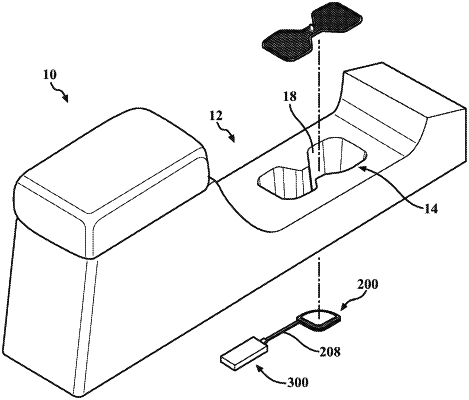| CPC B60Q 3/229 (2022.05) [F21V 3/00 (2013.01); H02J 50/10 (2016.02); F21W 2106/00 (2018.01); F21Y 2115/10 (2016.08)] | 20 Claims |

|
1. An accent lighting system for a vehicle comprising:
a light module configured for insertion into a cupholder in the vehicle, the light module including:
a housing defining an internal chamber;
a first inductive coil located within the internal chamber;
a printed circuit board assembly including a plurality of light sources, the printed circuit board assembly being in electrical communication with the first inductive coil such that the first inductive coil delivers power to the plurality of light sources;
a diffuser extending along an outer perimeter of the housing and including one or more light-permeable materials so as to allow light emitted from the plurality of light sources to pass therethrough; and
a cover overlying the printed circuit board assembly;
a transmitter including a second inductive coil configured for electromagnetic communication with the first inductive coil such that the second inductive coil wirelessly delivers power to the first inductive coil, thereby obviating any need for penetrations in the cupholder to establish electrical communication between the transmitter and the light module so as to inhibit fluid leakage from the cupholder; and
a control module positioned between the transmitter and a power source in the vehicle such that power flows from the power source to the transmitter through the control module, whereby the first inductive coil and the second inductive coil create current in the light module via electromagnetic induction to thereby energize the plurality of light sources and illuminate the light module and the cupholder.
|